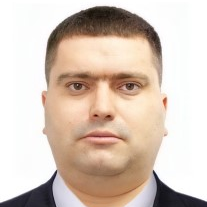Mathematics in Geophysical Research
A special issue of Mathematics (ISSN 2227-7390). This special issue belongs to the section "Engineering Mathematics".
Deadline for manuscript submissions: closed (30 November 2023) | Viewed by 6158
Special Issue Editors
Interests: radon; thoron; radionuclides; dosimetry; radiation safety; nuclear physics; geophysics; gamma; radiation; Geant4; physical simulation; mathematical modeling
Interests: fractional calculus; fractional oscillators; fractional dynamics; numerical methods; mathematical modeling
Special Issues, Collections and Topics in MDPI journals
Special Issue Information
Dear Colleagues,
We invite you to contribute original research articles on the theoretical or practical application of mathematical methods and tools in solving complex problems in geophysics to this Special Issue, "Mathematics in Geophysical Research".
The development of modern mathematical research tools has led to their application in the study of complex natural phenomena and processes. This Special Issue will particularly focus on the use of mathematical tools (methods for mathematical modeling (simulation), computational mathematics, processing experimental data, etc.) in the study of dynamic processes in various geospheres. Articles using computer simulation to visualize the results of geophysical process research are also welcome.
Topics that may be featured in the Special Issue include (but are not limited to):
- Mathematical modeling in geospheres;
- Mathematical methods for processing geophysical data;
- Simulation and computer modeling in geophysical research;
- Inverse problems in geophysics;
- Applied nuclear physics in geophysics.
Prof. Dr. Valentina Yakovleva
Dr. Roman Parovik
Guest Editors
Manuscript Submission Information
Manuscripts should be submitted online at www.mdpi.com by registering and logging in to this website. Once you are registered, click here to go to the submission form. Manuscripts can be submitted until the deadline. All submissions that pass pre-check are peer-reviewed. Accepted papers will be published continuously in the journal (as soon as accepted) and will be listed together on the special issue website. Research articles, review articles as well as short communications are invited. For planned papers, a title and short abstract (about 100 words) can be sent to the Editorial Office for announcement on this website.
Submitted manuscripts should not have been published previously, nor be under consideration for publication elsewhere (except conference proceedings papers). All manuscripts are thoroughly refereed through a single-blind peer-review process. A guide for authors and other relevant information for submission of manuscripts is available on the Instructions for Authors page. Mathematics is an international peer-reviewed open access semimonthly journal published by MDPI.
Please visit the Instructions for Authors page before submitting a manuscript. The Article Processing Charge (APC) for publication in this open access journal is 2600 CHF (Swiss Francs). Submitted papers should be well formatted and use good English. Authors may use MDPI's English editing service prior to publication or during author revisions.
Keywords
- engineering mathematics
- mathematical and computer modeling
- mathematical tools
- computational geophysics
- geospheres
- geophysical research
- geophysical data






